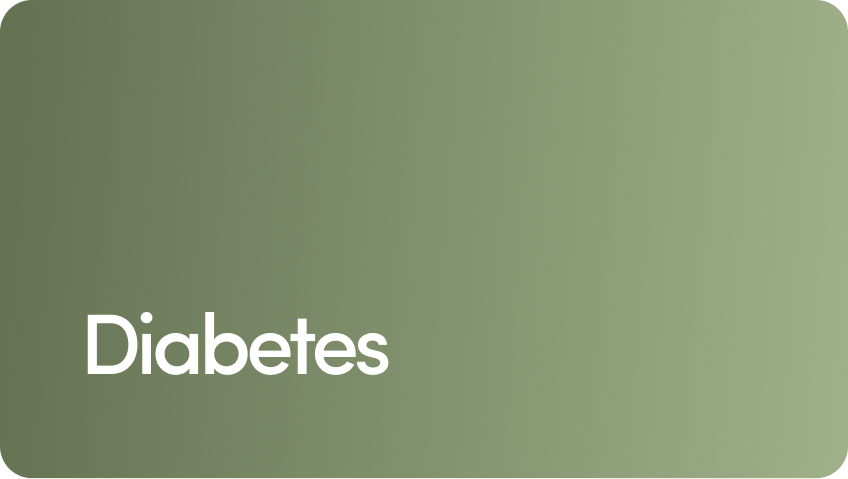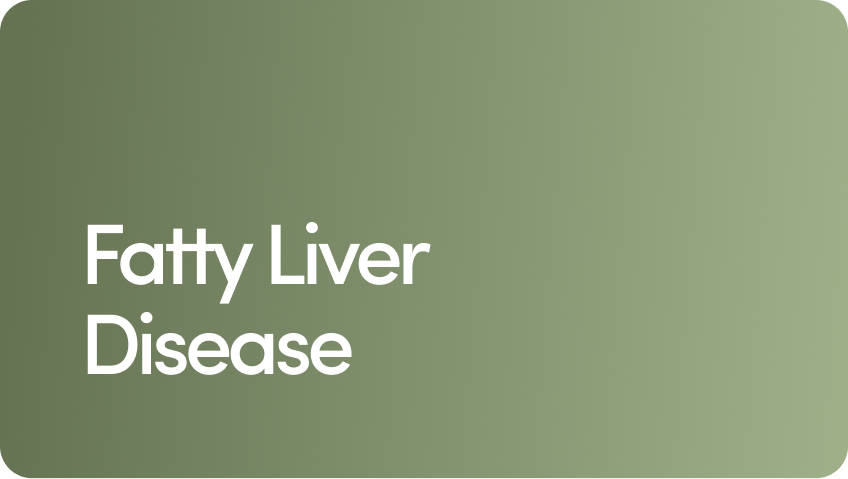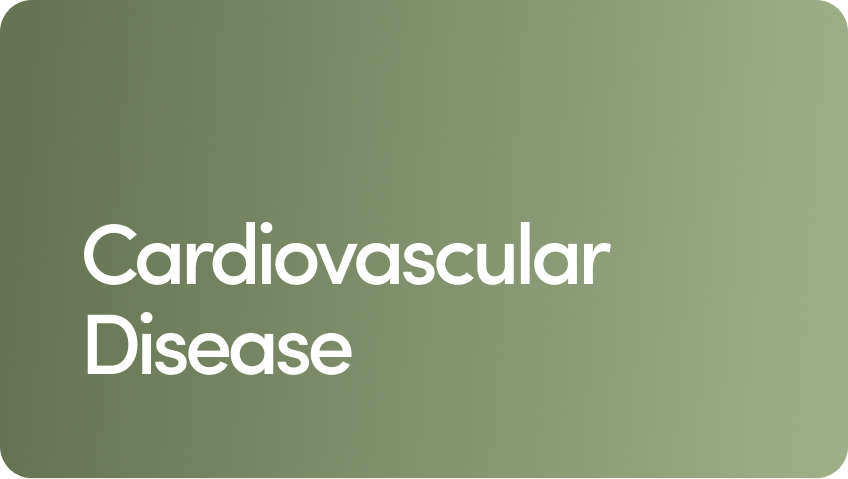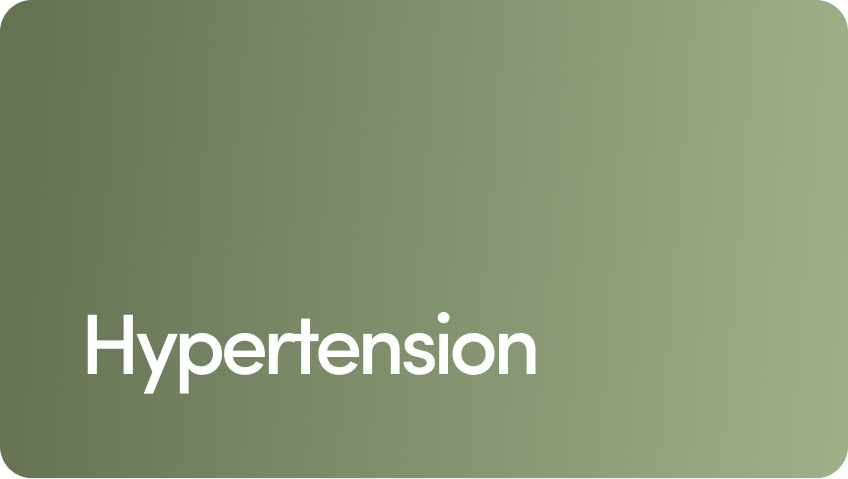Arrhythmia
Arrhythmias are abnormal heart rhythms due to changes in the heart’s electrical activity. The conditions are categorized based on where the problem originates and what type of abnormality develops.
Overview
Arrhythmias are abnormal heart rhythms due to changes in the heart’s electrical activity. The conditions are categorized based on where the problem originates and what type of abnormality develops.
Arrhythmias range from mild to severe. But even those unlikely to cause serious issues can sometimes result in frightening symptoms, such as heart palpitations or feeling like your heart is beating abnormally fast.
Read on to learn more about arrhythmias, including the most common types, potential causes, and how they’re treated.
What Is an Arrhythmia?
Your heart’s rhythm is controlled by electrical impulses generated by special cells inside this main cardiovascular organ. Most people’s hearts beat in a constant rhythm 60 to 100 times per minute.
An arrhythmia is a condition that causes your heart to beat irregularly due to a disruption in its natural electrical activity. It can make your heart beat:
Too fast
Too slow
In an erratic pattern
Keep reading to learn what this means for heart health and overall wellness.
The Heart’s Anatomy and Arrhythmia
The heart has four chambers. The two upper chambers are called the right and left atria (singular atrium), and the two lower chambers are the right and left ventricles.
Electrical activity within the heart follows a set pattern, and problems at any point can lead to an arrhythmia.
Here’s what the pattern generally looks like:
The heart’s electrical system starts with impulses generated in its sinoatrial (SA) node, a bundle of cells inside the right atrium. Electrical signals produced here pass through the atria, making them contract and push blood into the lower chambers of the heart.
The electrical signals are then carried to the atrioventricular (AV) node, located between the heart’s upper and lower chambers.
The signal continues to travel through specialized cell pathways called the “bundle of His” (short for intra-Hisian blocks), then to bundle branches, and finally to Purkinje fibers (a network of nerve cells) before signaling for the bottom chambers to contract.
This slight delay in the time it takes electrical impulses to reach the bottom of the heart allows the ventricles to fill up before the heart pumps blood to the lungs and throughout the rest of the body.
Many types of arrhythmias can develop. We’ll go over these below.
Abnormally Fast or Slow Heartbeats
Arrhythmias that make the heart beat abnormally slow or cause a fast heart rate include:
Bradycardia
Tachycardia
Premature heartbeat
Long QT syndrome
Supraventricular arrhythmias
Atrial fibrillation
Atrial flutters
Paroxysmal supraventricular tachycardia (PST)
Find more details ahead.
Bradycardia
Bradycardia is a resting heart rate below 60 beats per minute. A heartbeat slower than this is common, especially in physically active people and athletes (when they’re not working out). It often doesn’t cause problems unless your heart rate becomes extremely slow.
Tachycardia
Tachycardia is a faster heartbeat than normal. It’s defined as a resting heart rate over 100 beats per minute. If severe enough, it can put you at risk of developing several types of serious heart problems, including blood clots and heart attack.
Premature heartbeat
There are two types of premature heartbeat: PAC (premature atrial contraction) and PVC (premature ventricular contraction).
A premature heartbeat is when part of the heart beats earlier than it should. It might give you the feeling your heart skipped a beat.
Long QT Syndrome
Long QT syndrome is an arrhythmia characterized by a lengthened section of your heartbeat called the QT interval that can be visualized on an electrocardiogram (ECG or EKG).
About one in 10 people with this form of arrhythmia develop cardiac arrest, and the first sign can be sudden death.
Supraventricular Arrhythmias
Supraventricular arrhythmias originate above the bottom chambers of the heart.
Atrial Fibrillation
Atrial fibrillation (or AFib for short) happens when the top heart chambers quiver (fibrillate) and beat abnormally, which can cause blood to pool in the heart.
AFib can lead to blood clots, potentially resulting in complications such as stroke. Around 15 to 20 percent of people who suffer from strokes have this type of arrhythmia.
Atrial Flutters
Atrial flutter is when the top chambers of the heart flutter. These upper chambers may beat as fast as 250 to 300 times a minute.
Like atrial fibrillation, atrial flutter can increase your risk of some complications such as stroke.
Paroxysmal Supraventricular Tachycardia (PST)
PST causes short-lasting periods of a rapid heart rate that usually starts and stops. It’s the second most common type of tachycardia, behind atrial fibrillation.
Ventricular Arrhythmias
Ventricular arrhythmias start in the bottom chambers of the heart. The main kinds are ventricular tachycardia and ventricular fibrillation.
Ventricular Tachycardia
Ventricular tachycardia is a resting heart rate of over 100 beats per minute for three or more beats in a row. It’s classified as “sustained” if it lasts more than 30 seconds and “unsustained” if it’s shorter. Unsustained ventricular tachycardia may not require treatment.
Ventricular Fibrillation
Ventricular fibrillation is when the bottom chambers of the heart beat rapidly and abnormally. It’s often considered the most serious arrhythmia and can often lead to death.
Symptoms
Symptoms of arrhythmia depend on the specific type of arrhythmia and its severity.
Folks with moderate to severe arrhythmia often experience shortness of breath, chest pain, or heart palpitations. Minor arrhythmias can be asymptomatic, meaning they don’t cause noticeable symptoms.
Heart Arrhythmia Symptoms
When symptoms do appear, they often include the following:
Heart palpitations. This is when your heartbeat becomes noticeable for a few seconds. It’s often harmless but can be frightening. Heart palpitations might feel like brief moments of racing, pounding, thumping, fluttering, or skipped or extra beats.
Chest pain. Also known as angina, discomfort or pain in the chest can be a sign of some arrhythmias. It can also suggest other underlying heart conditions that may require medical attention.
Shortness of breath. Some might experience difficulty breathing or a feeling of breathlessness.
Lightheadedness or dizziness. You may develop lightheadedness or dizziness if your blood pressure falls or your brain doesn’t have adequate oxygen due to an arrhythmia.
Fatigue. Fatigue that happens even after periods of adequate rest can be a symptom of many conditions, including arrhythmias.
Fainting (syncope). Severely low oxygen in the brain can lead to sudden loss of consciousness, making someone suddenly pass out.
Some heart arrhythmias can be minor and may not call specific medical attention. However, others — such as ventricular fibrillation or ventricular tachycardia — can be life-threatening.
In severe cases, arrhythmias can lead to serious complications, including cardiac arrest, heart failure, blood clots, or stroke.
Causes
Arrhythmias are irregular heartbeats that can be caused by structural problems within the heart, underlying medical conditions, or lifestyle factors.
Causes of Arrhythmia
Arrhythmias can happen because of various factors affecting the heart’s electrical system. These causes can be broadly categorized into structural, electrical, and lifestyle-related causes.
Structural Abnormalities
Some of the structural problems that can lead to arrhythmia:
Coronary artery disease. Coronary artery disease happens when plaque builds up in the arteries that supply the heart with blood. It accounts for more than 15 percent of deaths globally.
Cardiomyopathy. Cardiomyopathy is a group of disorders that cause problems with the heart muscle. They can make the heart stiff, thick, or weak — changes that might disrupt the heart’s electrical system.
Heart valve disease. Your heart has four valves that help control blood flow to, from, and through the organ. Abnormalities in these valves can cause your heart’s chambers to become enlarged, potentially disrupting electrical signals.
Congenital heart defects. Congenital heart defects are structural problems with the heart present from birth. Some congenital defects can lead to arrhythmia.
Lifestyle Factors
Certain lifestyle factors can potentially trigger arrhythmias, including:
Caffeine or other stimulant use. Abusing stimulants, such as caffeine or some illicit drugs (like cocaine), can damage heart muscles and lead to scarring. These factors may increase a person’s risk of arrhythmia.
High stress. Physical or emotional stress can raise your heart rate and elevate the risk of developing arrhythmias. For example, job stress has been associated with an increased risk of atrial fibrillation.
High alcohol consumption. Drinking alcohol is associated with a higher risk of some arrhythmias — and the risk is generally higher with higher amounts of alcohol.
Low levels of physical activity. Low levels of physical activity are associated with a higher risk of arrhythmia. Meanwhile, exercising more might help treat some arrhythmias.
Smoking. Smoking cigarettes is associated with an elevated risk of arrhythmia. In general, your risk is higher the more you smoke.
Underlying Medical Conditions
Some medical conditions are associated with a higher risk of arrhythmia, such as:
Obesity
Sleep apnea
High blood pressure (hypertension)
Thyroid disease
Diabetes (or prediabetes)
Kidney disease
Lung disease
If you have one of these medical issues and think you’ve experienced arrhythmia, contact a healthcare provider.
Risk Factors
Many factors can increase the likelihood of developing arrhythmias. These are called risk factors.
Understanding the risk factors for arrhythmia can help you take preventive measures or receive treatment earlier.
Risk Factors for Arrhythmia
Known arrhythmia risk factors include:
Age. Older adults are more likely to develop arrhythmias, such as atrial fibrillation, due to age-related changes in the heart’s electrical system.
Heart disease. Folks with underlying heart conditions — coronary artery disease, heart failure, or a previous heart attack — have a higher risk.
High blood pressure. Chronic high blood pressure can enlarge and weaken the heart, making it more prone to arrhythmia.
Electrolyte imbalances. Abnormal levels of electrolytes (potassium, calcium, and magnesium) can interfere with the heart’s electrical impulses. Many conditions can cause electrolyte imbalance — dehydration, for one.
Congenital heart defects. Some congenital heart defects may make you prone to developing arrhythmias in childhood or later in life.
Underlying medical conditions. Underlying medical conditions that increase a person’s risk of arrhythmia include diabetes, sleep apnea, kidney disease, and obesity.
Medications. Some medications are known to cause arrhythmias as a side effect, including antimicrobial drugs, antipsychotics, and methadone.
Family history. If your parents or other close relatives have arrhythmia, you might have an increased risk as well.
Diagnosis
Some arrhythmias last your whole life, whereas others might be temporary, like those that happen because of dehydration.
Healthcare providers can use many tests to measure electrical activity in the heart and look for abnormal patterns. The main test is an ECG or variations of an ECG.
Diagnosing Arrhythmia
It’s crucial to see a medical professional if you develop concerning heart symptoms, such as persistent heart palpitations, chest pain, or lightheadedness.
For diagnosing most medical problems, healthcare providers start by:
Considering your symptoms
Looking at your personal medical history
Reviewing your family medical history
Performing a physical exam
If your provider suspects a problem with your heart, they may refer you to a specialist called a cardiologist. A cardiologist might perform or order additional tests, such as:
Electrocardiogram. ECG is the primary test for detecting arrhythmias. It uses electrodes that stick to the chest to record electrical impulses. A standard ECG can only diagnose arrhythmias that occur during the test.
Holter monitor. A Holter monitor test involves wearing a portable ECG that records your heart’s electrical activity over 24 to 48 hours. It can detect arrhythmias that come and go.
Event monitor. Event monitoring involves wearing a device over a longer period, often for a month or two. The device might be implanted under the skin or worn as a bracelet, finger clip, or patches worn under the arm.
Echocardiogram. An echocardiogram is an ultrasound of the heart that allows providers to evaluate its structure and function. This test can identify underlying heart conditions that may contribute to arrhythmia.
Electrophysiology study (EPS). An EPS is an invasive procedure that places catheters with electrodes into the heart. It allows medical providers to measure electrical activity and identify the specific areas where arrhythmia originates.
Stress test. A stress test monitors your heart’s electrical activity while you exercise. It can help identify arrhythmias that might arise during exercise.
Blood tests. Blood tests can help providers identify electrolyte imbalances.
Treatment
Minor arrhythmias might not need treatment, but your provider may still want to monitor them regularly. More serious arrhythmias might require treatments such as medications or surgical procedures.
Heart Arrhythmia Treatments
Treatment for arrhythmias depends on the type and severity of the condition and other factors like the patient’s overall health.
Heart Arrhythmia Medications
Antiarrhythmic medications can help control your heart rate and restore normal heart rhythm. Healthcare providers might prescribe:
Adenosine
Digoxin
Calcium channel blockers
Potassium channel blockers
Sodium channel blockers
Your provider will review your symptoms to help figure out what type of medication may be best for your needs.
Medical Procedures to Treat Arrhythmia
Medical procedures used to treat arrhythmia:
Catheter ablation. This involves inserting a long tube into a blood vessel, often in the groin, and threading it until it reaches the heart. Surgeons use heat or extreme cold to destroy the heart tissue responsible for the abnormal electrical signals. Catheter ablation can be effective for certain types of arrhythmias, such as atrial fibrillation or atrial flutter.
Pacemaker. A pacemaker is a small implanted device that can speed up your heart rate. It sends electrical signals to your heart to ensure it beats regularly.
Implantable cardioverter defibrillator (ICD). An ICD is a device implanted into the chest to monitor heart rhythm. It delivers a shock to restore a normal rhythm if it detects an abnormal pattern. You may need an ICD if you have a potentially life-threatening arrhythmia like long QT syndrome or a ventricular arrhythmia.
Cardioversion. With this procedure, medications or an electrical shock are used to restore your heart’s normal rhythm. It’s used to treat atrial fibrillation and other arrhythmias.
Prevention
Not all arrhythmias can be prevented. That said, you can reduce your risk of developing some forms of arrhythmia with lifestyle changes or by managing underlying health conditions.
Arrhythmia Prevention Tips
Here are some ways you can prevent arrhythmias.
Adopting a Heart-Healthy Diet
Eating a heart-healthy diet can help you maintain overall heart health and may help prevent some arrhythmias. Dietary changes you can make:
Minimizing saturated fats and trans fats
Lowering your intake of cholesterol, sodium, and alcohol
Eating fewer added sugars and processed foods
Eating plenty of fruits and vegetables
Incorporating whole grains into your meals
Eating more nutritious foods will also support your mental and physical well-being as a whole.
Exercising Regularly
Regular physical activity can strengthen your heart and potentially prevent cardiovascular disease. Those with heart conditions should consult a healthcare provider before starting an exercise regimen.
Avoiding Stimulants
Stimulants (such as caffeine and some illicit drugs like cocaine) can speed up your heart rate and may trigger arrhythmias.
Quitting or Avoiding Smoking
Smoking is a major risk factor for heart disease and arrhythmias. Quitting or avoiding cigarettes can potentially improve your overall cardiovascular health.
Managing Stress
Reducing stress and getting enough rest might help prevent arrhythmias. Some ways you may be able to reduce stress:
Spending more time with friends and family
Prioritizing activities you enjoy
Yoga and other relaxing exercises
Small things like a quick walk outside to break up your workday or going to bed earlier can also make a big difference.
Managing Other Health Conditions
Some underlying medical problems like high blood pressure, sleep apnea, or diabetes can increase your risk of developing arrhythmias. Getting proper treatment for these conditions can help prevent arrhythmias.
Receiving Regular Check-Ups
Routine visits with a healthcare provider can help you detect and manage arrhythmias early, before they become serious or life-threatening. If you have established heart disease, you may need regular follow-ups with a cardiologist.
22 Sources
- American Heart Association. (2022). Ablation for arrhythmias. https://www.heart.org/en/health-topics/arrhythmia/prevention--treatment-of-arrhythmia/ablation-for-arrhythmias
- American Heart Association. (2024). Bradycardia: slow heart rate. https://www.heart.org/en/health-topics/arrhythmia/about-arrhythmia/bradycardia--slow-heart-rate
- American Heart Association. (2022). Cardioversion. https://www.heart.org/en/health-topics/arrhythmia/prevention--treatment-of-arrhythmia/cardioversion
- American Heart Association. (2022). Common tests for arrhythmia. https://www.heart.org/en/health-topics/arrhythmia/symptoms-diagnosis--monitoring-of-arrhythmia/common-tests-for-arrhythmia
- American Heart Association (2022). Implantable cardioverter defibrillator. https://www.heart.org/en/health-topics/arrhythmia/prevention--treatment-of-arrhythmia/implantable-cardioverter-defibrillator-icd
- American Heart Association. (2024). Tachycardia: Fast heart rate. https://www.heart.org/en/health-topics/arrhythmia/about-arrhythmia/tachycardia--fast-heart-rate
- American Heart Association. (2024). Target heart rate chart. https://www.heart.org/en/healthy-living/fitness/fitness-basics/target-heart-rates
- American Heart Association. (2024). The American Heart Association diet and lifestyle recommendations. https://www.heart.org/en/healthy-living/healthy-eating/eat-smart/nutrition-basics/aha-diet-and-lifestyle-recommendations
- American Heart Association. (2022). Understand your risk for arrhythmia. https://www.heart.org/en/health-topics/arrhythmia/understand-your-risk-for-arrhythmia
- American Heart Association. (2023). What is atrial fibrillation? https://www.heart.org/en/health-topics/atrial-fibrillation/what-is-atrial-fibrillation-afib-or-af
- Dominic P, et al. (2023). Stimulant drugs of abuse and cardiac arrhythmias. https://www.ncbi.nlm.nih.gov/pmc/articles/PMC8766923/
- Elliott AD, et al. (2023). An exercise and physical activity program in patients with atrial fibrillation: the ACTIVE-AF randomized controlled trial. https://www.sciencedirect.com/science/article/pii/S2405500X22010672?via%3Dihub
- European Society of Cardiology (ESC). (2018). The more you smoke, the greater your risk of a heart rhythm disorder. https://www.escardio.org/The-ESC/Press-Office/Press-releases/the-more-you-smoke-the-greater-your-risk-of-a-heart-rhythm-disorder
- Foth C, et al. (2023). Ventricular tachycardia. https://www.ncbi.nlm.nih.gov/books/NBK532954/
- Fransson E, et al. (2018). Job strain and atrial fibrillation – results from the Swedish longitudinal occupational survey of health and meta-analysis of three studies. https://academic.oup.com/eurjpc/article/25/11/1142/5926234?login=false
- Hafeez Y, et al. (2024). Paroxysmal supraventricular tachycardia. https://www.ncbi.nlm.nih.gov/books/NBK507699/
- Ludhwani D, et al. (2023). Ventricular fibrillation. https://www.ncbi.nlm.nih.gov/books/NBK537120/
- National Health Service (NHS). (2022). Heart palpitations. https://www.nhs.uk/conditions/heart-palpitations/
- National Heart, Lung and Blood Institute (NHLBI). (2022). Arrhythmias. https://www.nhlbi.nih.gov/health/arrhythmias
- Ralapanawa U, et al. (2021). Epidemiology and the magnitude of coronary artery disease and acute coronary syndrome: a narrative review. https://www.ncbi.nlm.nih.gov/pmc/articles/PMC8242111/
- Tisdale JE, et al. (2020). Drug-induced arrhythmias: a scientific statement from the American Heart Association. https://www.ahajournals.org/doi/10.1161/CIR.0000000000000905
- Wong CX, et al. (2023). Alcohol and arrhythmias. https://www.jacc.org/doi/10.1016/j.jacep.2022.10.023
Editorial Standards
Hims & Hers has strict sourcing guidelines to ensure our content is accurate and current. We rely on peer-reviewed studies, academic research institutions, and medical associations. We strive to use primary sources and refrain from using tertiary references. See a mistake? Let us know at [email protected]!
Related Conditions
 Obesity
Obesity
 Diabetes
Diabetes
 Fatty Liver Disease
Fatty Liver Disease
 Cardiovascular Disease
Cardiovascular Disease
 Hypertension
Hypertension
 Insulin Resistance
Insulin Resistance
*All images feature a model portrayal
(unless otherwise noted).